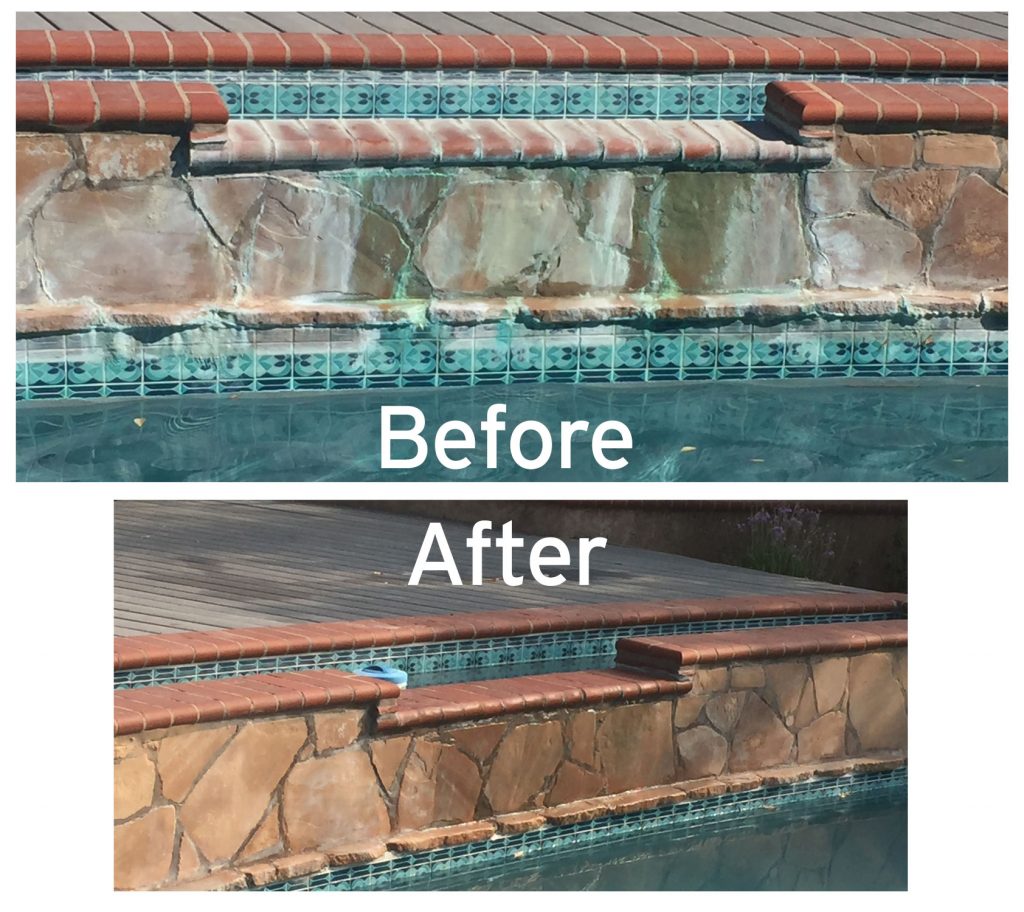What is the white stuff on my pool and how does it appear?
The white or grayish deposit, also called calcium deposits, which is sometimes rough can appear on the liner of your swimming pool (on the bottom, the walls, and especially at the level of the waterline).
The formation of these deposits is because of two mineral salts naturally present in the water of your pool: calcium carbonates and magnesium. The more they are present in the water, the more they form lime residues on the walls.
You should know that from one region to another, the concentration of these mineral salts varies. This is a completely natural phenomenon that depends on the geology of the soil and the path of the water. Some pools are therefore more prone to the appearance of deposits than others.
How to measure the hardness of my swimming pool water?
The calcareous nature of water is defined by its hardness. On average, it is considered that the TH of the water in a swimming pool must be between 10 and 25 ° f (French degrees).
The tH corresponds to the hardness of the water, which indicates its concentration in limestone. It is measured in French degree (° F) and is ideal between 10 and 20 ° F. Indeed, the higher the tH, the harder the water is, that is to say, it is limestone. On the other hand, the lower it is, the softer the water.
Note: dedicated accessories allow you to easily calculate this hardness, such as connected water analysis devices, manual colorimetric testers (strips to be dipped in a water sample), or photometers.
What are the dangers of the white stuff?
Over time, lime deposits can build up. In excess, it can scale your equipment and pipes and therefore damage them or make them obsolete. It can also make the water cloudy, promote the development of algae, and irritate the sensitive skin of swimmers. So many inconveniences that can be avoided or combated.
Removing calcium deposits: the solutions
When the scale has settled, it is difficult to get rid of it. In fact, in the event of scaling, the water in the basin must be completely emptied and a descaling product used. The most powerful is to be left on. In all cases, you need a little elbow grease to rub the stains and remove them completely. Remember to remove debris after cleaning the basin.
If you cannot remove lime with a dedicated product and it damages your equipment, you may have to change it. A solution that often turns out to be expensive. Do not hesitate to seek the advice of a professional to note the damage.
Preventing calcium formation: the solutions
Prevention is better than cure! This is why it is advisable to adopt a preventive behavior by using an anti-limescale or anti-scale product.
This type of cleaning product is specially designed to prevent the formation of tartar. It is recommended to use them if the water is very hard. On the other hand, if the hardness of the water is not too high, no need to resort to it.
This type of product requires precautions for use. Read the instructions carefully. It mixes with the water in your pool, according to a precise dosage and with filtration on. On average, this treatment lasts 12 hours (during which the pool is unusable).
Besides applying an anti-limescale treatment for swimming pools, water heating should be controlled. Regular temperature monitoring limits the formation of lime. In fact, hot water tends to favor the formation of tartar. Likewise, regular maintenance and control of the quality of the water, in particular the TH and the pH, make it possible to avoid unpleasant surprises.
Do not hesitate to contact our experts for more information.




